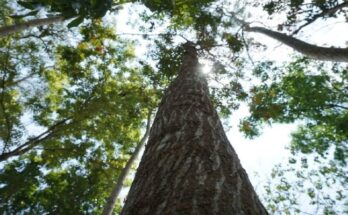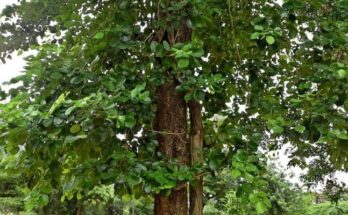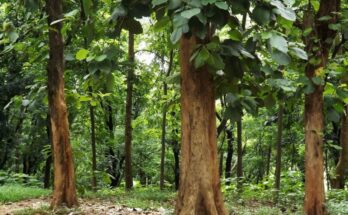|
Getting your Trinity Audio player ready...
|
Information About Mulberry Tree
(Moros Tree) Mulberries have enjoyed great popularity in recent years as shade-giving ornamental trees because of their rich edible fruits. Blackberries can be eaten raw or in delicious preserves, cakes, and wine. the Scientific name of the mulberry tree is Morus alba. Learn more about their leaves and their type below.
Mulberry Tree Scientific Classification
| Classification Types | Classification Status |
| Kingdom | Plantae |
| Order | Rosales |
| Family | Moraceae |
| Tribe | Moreae |
| Genus | Morus L |
Information About Mulberry Tree Leaves

Mulberries produce delicious berries popular globally and are often considered superfoods due to their concentration of powerful vitamins, minerals, and botanicals.
However, the fruit isn’t the only part that can offer health benefits. Its leaves have been used in medicine as a natural remedy for various ailments.
The leaves are very nutritious. They’re filled with powerful plant mixtures like antioxidant polyphenols and vitamin C, potassium, phosphorus, zinc, calcium, iron, and magnesium. Mulberry leaves have a variety of culinary and medicinal uses.
The leaves and other parts of the tree contain a milky-white sap called latex, which is slightly toxic to humans and can cause symptoms such as upset stomach or skin irritation if touched.
Here are Some Types of Mulberry Trees
White Mulberry Tree

White Mulberry was 1st carried to the US from China to raise the silk industry, as mulberry leaves are a favorite of the silkworm. Unfortunately, the silk trade never really picked up speed in the United States, but the white Mulberry is likely to stay.
White mulberries were also imported by immigrants from Asia as a medicinal plant. The edible leaves and berries have been used to treat colds, sore throats, breathing problems, eye problems, and continence. Birds were also pleased with these delicious berries and randomly planted other mulberry trees that quickly accommodated their new spot.
White mulberries proliferate and do not care about the type of soil. They grow on clayey, loamy, or sandy soils, whether they are alkaline or acidic. However, the white Mulberry doesn’t tolerate as much shade as the United States’ native red Mulberry. They start from white to pale pinkish-red and mature to almost black-purple.
Red Mulberry Tree
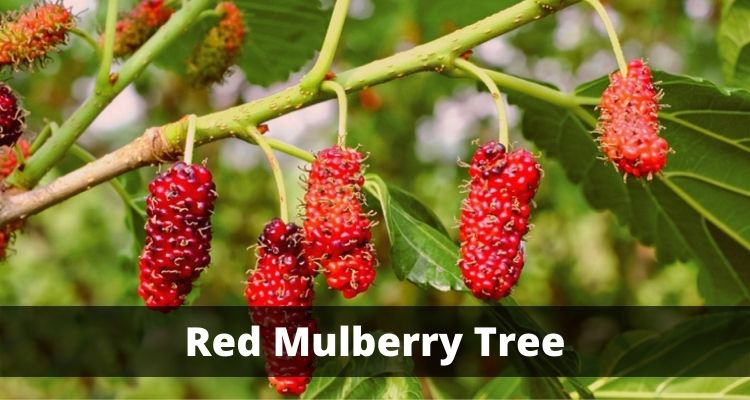
When used in landscaping, the red Mulberry is chosen for its decorative value and sometimes for its delicious fruits, which are often used in jams and cakes.
Planted and cared for with a bit of love, the red Mulberry is a beautiful, tall, and majestic species that can produce a plentiful harvest of berries.
Site selection will be an essential part of Mulberry’s success. It is a tree of great height and length. Consider a location that is not just the tree now but 15 years from now. Redberry jumble makes this step particularly important to avoid stains and material damage from falling fruits.
When you’re ready to plant, place the tree in a hole as deep as the container or pad and twice the width. Much around the newly planted tree to the drip line, being careful not to touch the bark as this will help the newly planted tree retain moisture.
Light: The tree will be more attractive and produce the most fruit in full sun. Tolerates partial shade but does not produce as effectively.
Soil: To ensure success, place the red Mulberry in well-drained, moist, and excellent conditions. A neutral to alkaline clay soil is preferable.
Water: Aside from the first planting, you don’t have to worry about additional watering. First of all, it is necessary to water the newly planted tree every week. A thorough soaking is sufficient. Weekly watering should only be maintained for the first year until the roots are formed.
Weeping Mulberry Tree

The Mulberry, native to China, was introduced to stimulate the flourishing silkworm trade. Since the tree is simple and can handle almost any soil, and can even tolerate a lot of neglect, it quickly became naturalized and was considered a weed. The leaves are undivided or lobed, dark green, and measure 5 to 18 cm (2 to 7 inches).
Weeping berries tolerate the conditions in which they grow. Therefore, they should be planted in well-drained soil with full or partial sunlight. You’ll need a regular watering schedule for the first few years, but it becomes quite a drought-tolerant once the tree is established.
If you want to slow the vigorous growth of a weeping mulberry tree, cut its summer growth in half in July. This will keep the tree at a shorter height but will encourage it to grow taller, making berry picking easier.
Note that falling fruit can make the tree extremely messy. Blackberries also have solid and shallow roots that can erode the surface if planted near a sidewalk or path. Mowing the lawn can also be difficult due to the shallow roots.
Weeping mulberries have little to no problems with pests or diseases, so continuing to care for weeping mulberries is minimal. I hope this information helps you. Comment below if you have any questions.
Fruitless Mulberry Tree
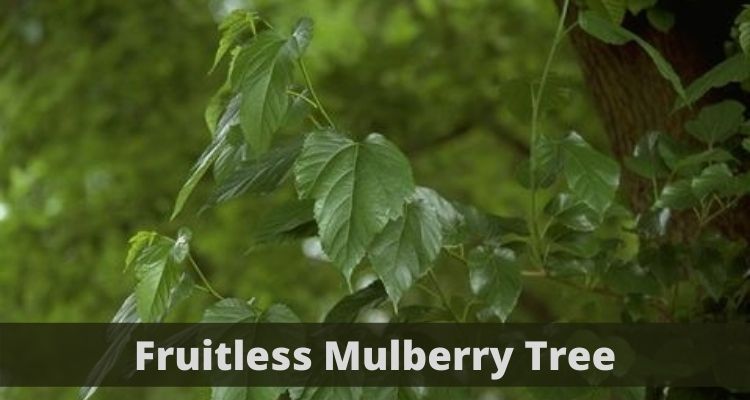
If you are growing mulberries, consider planting them in full sun or partial shade. It would be best to plant trees at least 2 meters from sidewalks, driveways, and foundations, as their strong roots can lift and crack concrete and pavement. Trees can handle almost any type of soil, but they do best in loamy, well-drained soils. The trees benefit from staking out in the first year. Young trees tend to be heavy on the canopy, and the trunks can easily break in strong winds. If the stake remains in place for more than a year, it can do more harm than good.
The fruitless Mulberry develops a highly dense, rounded crown and grows to 30 to 50 feet tall. Its deciduous, toothed leaves, glossy green-yellow to dark green, are highly variable in shape, some almost heart-shaped, others deeply lobed, often all on the same plant.
Growing the seedless Mulberry: The seedless Mulberry is an easy tree to grow in every way; it grows on almost pure gravel. It is drought tolerant and fast-growing, prefers full sun over light shade.
Uses of fruitless Mulberry: This tree is ideal when there is a need for quick shade. Pollution resistance is an excellent choice for urban conditions and is prevalent near the ocean.

